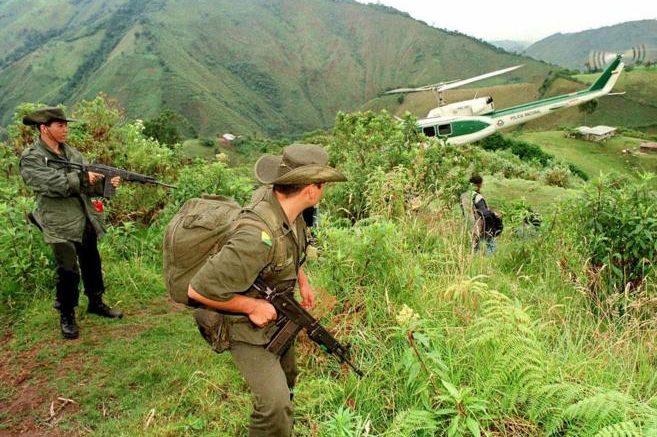(By Sarah Quarmby ; Pulsamerica): The Colombian government and the FARC have recently implemented a plan encouraging farmers to abandon coca production in favour of alternative legal crops. Coca leaves are the raw material for cocaine and Colombia is one of the top cocaine producers worldwide, along with Peru.

The plan forms part of the updated peace deal between the Government and the leftist rebels, which was ratified in December last year and brings hope for ending the civil violence that has lasted for more than 50 years.
Cocaine production provided the FARC with an important source of revenue, by taxing the farmers who produced the crop, and though controlling trafficking. As the FARC demobilise and leave the key cocaine producing areas, there is a risk of other armed groups or paramilitaries taking their place.
The new programme offers monthly payments equivalent to £280 for farmers who voluntarily destroy their coca crops, as well as the loans, guidance and technical assistance necessary to cultivate legal alternatives such as cacao (which makes chocolate) and fruit trees.
Policies that incentivise farmers to leave coca production have existed in Colombia for the past two decades, but have received significantly less support than programmes of extensive eradication, despite evidence to show that the former are more effective over the long term.
Indeed, the US-backed “Plan Colombia”, part of the more general “War on Drugs”, oversaw the aerial fumigation of coca crops using Monsanto-produced herbicide glyphosate. The mass fumigation was suspended by Colombian President Juan Manuel Santos last year amidst controversy over the safety of the programme. The World Health Organisation lists glyphosate as “probably carcinogenic”, and the herbicide often destroyed not just coca crops, but surrounding legal subsistence crops as well, leaving farmers without a livelihood.
There is further evidence that Plan Colombia was ineffective in preventing coca cultivation, despite being hailed as a success by Santos and former US President Barack Obama on its 15th anniversary last year. The amount of land cultivated with coca increased from approximately 48,000 hectares in 2013 to 69,000 hectares the following year. Furthermore during the first eight years of the plan, the number of victims of drugs-related violence increased.
The Government has pledged to invest the equivalent of £271m into the new scheme and aims to eradicate 100,000 hectares of coca this year, focusing on the 40 municipalities that are responsible for the majority of Colombia’s coca production.
Early reports show a strong chance of the new strategy proving successful. Indeed, Rafael Pardo, the government official responsible for the programme, said, “this is much more cost-efficient and furthermore ensures that territories are transformed and people’s lives are changed.”
 PULSAMERICA and YOUNG DIPLOMATS maintain a new strategic cross-posting partnership.
PULSAMERICA and YOUNG DIPLOMATS maintain a new strategic cross-posting partnership.
Pulsamérica is an online British-American news magazine and think tank that provides centralist, impartial coverage of Latin American national and international relations analysis on a country-by-country, topical basis. Bringing the Latin American perspective to the English language world, its readership spans more than 100 countries and various governmental and NGO authorities.
Sarah Quarmby is Pulsamerica’s contributor for Colombia and Chile. She is a Spanish and Latin American Studies undergraduate at University College London. She is currently wrapping up her year abroad in Colombia, where she has been working for the past ten months. During this time, she has gained an understanding of some of the most pertinent issues that country is currently facing. She has also had the chance to spend time in Chile, and her interests in both countries (indeed, any country) are focused around themes of human rights, women’s rights, social justice, the environment and politics.








